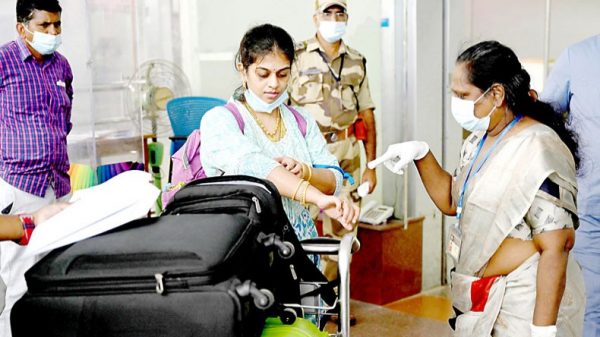Is monkeypox too dangerous?

Zubair Khaled Huq:
HUMAN monkeypox is a zoonotic orthopoxvirus with a presentation similar to smallpox. Clinical differentiation of the disease from smallpox and varicella is difficult. Laboratory diagnostics are principal components of the identification and surveillance of the disease and new tests are needed for a more precise and rapid diagnosis. Monkeypox earned its name in 1958 when two outbreaks of a pox-like disease occurred in colonies of monkeys kept for research. However, the main disease carrier of monkeypox is still unknown.
African rodents are suspected to play a part in transmission. The first known case of monkeypox in people was recorded in 1970 in Congo during a period of intensified effort to eliminate smallpox. Monkeypox is mostly found in West and Central Africa, but additional cases have been seen in Europe and other parts of the world in recent years. The cases are typically linked to international travel or imported animals infected with pox.
The monkeypox virus is a member of the orthopoxvirus genus in the family Poxviridae. It is a mild infection with symptoms that include fever, headaches and skin rashes. There are two main variants of the Congo strain with up to 10 per cent mortality and the West African strain with 1 per cent fatality rate. Children are typically more prone to severe symptoms. The virus can also be passed to a newborn through birth or early physical contact. Early genomic sequencing of a handful of the cases in Europe has suggested a similarity with the strain that spread in a limited fashion in Britain, Israel and Singapore in 2018.
Severe complications and sequelae were found to be more common among unvaccinated than vaccinated patients. Patients have been observed with pulmonary distress or bronchopneumonia, often late in the course of illness, suggestive of a secondary infection of the lungs. Vomiting or diarrhoea can occur by the second week of illness and can contribute to severe dehydration. Encephalitis was observed in one patient and septicemia in another patient. Ocular infections can occur and may result in corneal scarring and permanent vision loss. The average case fatality rate of unvaccinated patients has been recorded as high as 11 per cent.
Experts say that close contact with an infected individual is required to spread the monkeypox virus. Infection can develop after exposure to broken skin, mucous membranes, respiratory droplets, infected body fluids or even contact with contaminated linen. The painful, raised poxes are pearly and fluid-filled, often surrounded by red circles. The lesions finally scab over and resolve in two to three weeks.
Monkeypox has not previously been described as a sexually transmitted infection although it can be passed on by direct contact during sex, via lesions on the skin. The incubation period of monkeypox is usually from 6 to 13 days but can range from 5 to 21 days. Monkeypox is usually self-limiting but may be severe in some individuals, such as children, pregnant women or persons with immune suppression. The treatment is generally supportive as there are no specific drugs available. Eating inadequately cooked meat and other animal products of infected animals is a possible risk factor.
Diagnostic assays are important components of the identification of infection. Tests are most powerful when they are combined with clinical and epidemiological information, including a patient’s vaccination history. Given the limited cold chain and diminished resources for sample collection and storage, lesion exudate on a swab or crust specimens remains some of the best and least invasive acute patient specimens. Viral DNA present in lesion material is stable for a long period if kept in a relatively dark, cool environment, an important factor to consider when a cold chain is not readily available.
Cross-protective immunity from smallpox vaccination will be limited to older persons as populations worldwide under the age of 40 or 50 years no longer benefit from the protection afforded by prior smallpox vaccination programmes. There is little immunity to monkeypox among younger people living in non-endemic countries as the virus has not been present there. Any patient with suspected monkeypox should be investigated and, if confirmed, isolated until their lesions have crusted, the scab has fallen off and a fresh layer of skin has formed underneath.
Health experts focused on creating public awareness of the monkeypox virus. They also advised going to the hospital if any symptoms are present. In Bangladesh, hospitals are asked to collect patient samples and send them to the the Institute of Epidemiology, Disease Control and Research. People coming to Bangladesh are advised to have health check-ups at airports. Monkeypox enters the body through the nose. Wearing masks and washing hands frequently could be a good deterrent. The same rules apply to both the Covid and monkeypox virus. At airports, anyone showing signs of monkeypox should be quarantined for at least 14 days.
Health experts claim that the smallpox vaccine is 85 per cent effective in preventing the disease. What seems to be happening is that it has got into the population as a sexual form, as a genital form, and is spread as sexually transmitted infections are.
The monkeypox outbreak did not resemble the early days of the Covid pandemic because it does not transmit as easily. Those who suspect they may have been exposed or who show symptoms should avoid close contact with others. The health services directorate general has issued an alert for all international airports and land ports to begin monkeypox screening of all incoming passengers from countries where cases have been detected.
New therapeutics and vaccines offer hope for the treatment and prevention of monkeypox. More research must. However, be done before they are ready to be deployed in an endemic setting. The documented rise in the incidence of human disease needs further evaluation and consideration with additional studies to better understand the range of factors involved in disease transmission and spread.
Dr Zubair Khaled Huq is a public health specialist.























Leave a Reply